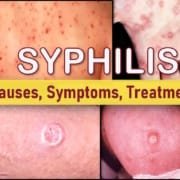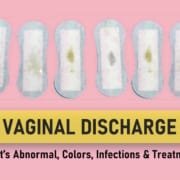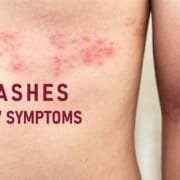What are Chances of Getting Herpes from an Infected Partner?
Genital herpes is one of the most common sexually transmitted infections (STIs) worldwide. Herpes is caused by two types of the herpes simplex virus (HSV): HSV-1 and HSV-2. While HSV-1 is typically associated with cold sores around the mouth (oral herpes), it can also lead to genital infections through oral-genital contact. On the other hand, HSV-2 is primarily responsible for genital herpes.
Once a person is infected, the virus travels to nerve tissues where it can lie dormant. Outbreaks, characterized by blisters and sores, may recur, even without visible symptoms. Genital herpes is highly contagious and can be transmitted through sexual contact, even when the infected person shows no signs of an outbreak. The transmission of herpes from an infected partner depends on various factors, including the presence of symptoms, use of protection, and type of sexual activity.
What is Genital Herpes?
Genital herpes is caused by the herpes simplex virus, which is mainly spread through sexual contact. It can lead to painful blisters and sores in the genital region. During the initial outbreak, individuals may also experience flu-like symptoms such as fever, body aches, and swollen lymph nodes.
The two main types of HSV are:
- HSV-1: Typically causes oral herpes (cold sores) but can also result in genital infections through oral sex.
- HSV-2: Primarily responsible for genital herpes, causing lesions and sores in the genital area.
Although HSV-1 is more commonly associated with oral infections and HSV-2 with genital infections, both strains can affect either area. For example, genital infections caused by HSV-1 are referred to as genital HSV-1 (GHSV-1), while oral infections caused by HSV-2 are termed oral HSV-2 (OHSV-2). The number indicates the strain of the virus, not its location.
After the initial outbreak, the herpes virus becomes dormant in the nerves, potentially reactivating later, leading to recurrent outbreaks of blisters.
How Common is Genital Herpes?
Genital herpes remains one of the most widespread STIs across the globe.
- Globally: According to the World Health Organization (WHO):
- An estimated 3.7 billion people under age 50 (67%) have herpes simplex virus type 1 (HSV-1), the primary cause of oral herpes.
- Around 491 million people aged 15–49 (13%) are infected with herpes simplex virus type 2 (HSV-2), the leading cause of genital herpes.
- Over 23 million new cases are reported worldwide every year.
- In the United States:
- Approximately 1 in 6 people aged 14 to 49 are infected with HSV-2.
- There are an estimated 776,000 new genital herpes infections annually.
- HSV is a leading cause of genital ulcers in the U.S.
- Women are more likely to contract genital herpes than men due to more efficient transmission from men to women.
- About 85% to 90% of infections remain unrecognized and undiagnosed.
What Are the Chances of Getting Herpes?
The likelihood of contracting herpes from an infected partner depends on several key factors, including:
- Presence of Visible Herpes Lesions: The risk is significantly higher when active sores are present.
- Use of Protection: Consistent use of condoms can lower the chances of transmission, although not completely eliminate it.
- Antiviral Medication: An infected partner taking daily antiviral medications can reduce the risk of transmission.
- Immune System Health: A weakened immune system in the uninfected partner increases the likelihood of contracting herpes.
- Frequency and Type of Sexual Activity: Different sexual activities and frequency of encounters impact the transmission risk.
- Gender: Studies show that women are more likely to contract genital herpes from men than vice versa.
While herpes can affect anyone, certain subgroups of the population have a higher risk of contracting genital herpes. These groups include:
- Women: Statistically, females are more prone to contracting herpes.
- Ethnic Groups: African Americans and Hispanic populations have a higher prevalence of genital herpes, with Mexican Americans having one of the highest incidence rates.
- Individuals with Multiple Sexual Partners: The risk increases with the number of partners.
- Commercial Sex Workers: Engaging in sexual activity with sex workers increases transmission risks.
- Older Individuals: The likelihood of contracting herpes increases with age, as older individuals may have had more sexual partners.
How Is Herpes Transmitted?
Herpes is transmitted through skin-to-skin contact and the exchange of bodily fluids. This includes contact with:
- Herpes sores: Active lesions significantly increase the chance of transmission.
- Genital fluids: HSV can be passed through fluids during sexual activity.
- Saliva: Oral herpes (HSV-1) can be spread through kissing or oral sex.
- Mouth or Genital Mucosa: The moist inner lining of the mouth and genital area provides a favorable environment for virus transmission.
Herpes transmission can occur both when symptoms are present (symptomatic transmission) and when no symptoms are evident (asymptomatic shedding).
Risk of Herpes Transmission When Symptoms Are Present
The risk of passing herpes is highest when the infected individual shows symptoms. Studies estimate that the transmission rate during symptomatic periods is approximately 20.1% per year.
What Are the Symptoms of Herpes?
A person with herpes is considered symptomatic during the following stages:
- Prodromal Stage: This initial stage may include flu-like symptoms such as fever, chills, muscle aches, fatigue, and localized skin tingling.
- Lesion Development: The appearance of sores, which start as redness and evolve into blisters, followed by open sores that eventually crust and heal.
The individual is considered contagious until the skin has fully healed, which may take a few days after the crust forms.
Risk of Herpes Transmission Without Symptoms
Even when an infected partner shows no visible signs of herpes, the virus can still be transmitted through a process called asymptomatic virus shedding. The transmission risk from an asymptomatic partner is lower, around 10% per year, but it remains a significant concern due to virus shedding. However approximately 70% of genital herpes transmissions occur during asymptomatic virus shedding periods, when the infected person has no visible symptoms.
What Is Asymptomatic Virus Shedding?
Asymptomatic virus shedding occurs when the herpes virus is present on the skin or mucous membranes without causing symptoms. This virus shedding is episodic, lasting from 12 hours to 3 days at a time, and tends to be more frequent shortly after acquiring the virus. Over time, the frequency and duration of shedding decrease, but the risk of transmission still persists.
Risk of HSV-2 Transmission During Unprotected Sex
Unprotected sexual activity significantly increases the chances of HSV-2 transmission. Various studies estimate that the risk of transmission ranges from 3% to 10% per sexual act, with a higher transmission rate from men to women.
Risk of HSV-2 Transmission During Protected Sex
The use of condoms greatly reduces the risk of herpes transmission but does not eliminate it completely. The risk of acquiring herpes during protected sex is about 0.08% to 0.25% per sexual act.
Condoms can decrease the risk of transmission by:
- 96% from men to women
- 65% from women to men
Despite the protection condoms provide, there is still a risk because herpes is transmitted through skin-to-skin contact. Areas not covered by a condom remain vulnerable to infection.
Risk of Herpes Transmission When the Infected Partner Is on Medication
Antiviral medications such as Acyclovir, Famciclovir, and Valacyclovir are effective in both treating herpes outbreaks and reducing the risk of transmission. These medications can lower the transmission risk by approximately 50%.
Risk of Contracting HSV-2 Through Oral Sex
The risk of contracting HSV-2 through oral sex is low because HSV-2 primarily resides in the genital region. When HSV-2 does infect the oral area, its recurrence and asymptomatic shedding are rare, which reduces the likelihood of transmission.
Risk of Contracting HSV-1 Genitally
While genital transmission of HSV-1 can occur, it is less common than oral transmission. HSV-1 is typically associated with oral herpes and tends to reside in the trigeminal ganglia (a cluster of nerves in the head). When HSV-1 infects the genital area, the shedding rate is lower, around 11%, compared to 37% in the oral region.
Transmission Rates Based on Gender
Transmission rates differ between men and women:
- The chance of transmission from an infected woman to a healthy man is about 4% per year.
- The chance of transmission from an infected man to a healthy woman ranges from 7% to 31% per year.
The higher transmission rate from men to women is due to the larger surface area of mucosa in the female genital area, which provides more opportunities for the virus to enter the body.
Frequently Asked Questions (FAQ)
Can You Be Exposed to Herpes and Not Get Infected?
Yes, it is possible to be exposed to herpes and not contract the virus, especially if the infected partner is asymptomatic and protection is used. However, the risk is never entirely eliminated.
Is Herpes Less Contagious Over Time?
Yes, herpes becomes less contagious over time. In the first few years after contracting the virus, there is a higher rate of asymptomatic virus shedding, which declines as time goes on. Studies have shown that shedding rates can decrease from 33.6% to 16.7% within a year.
How Can I Prevent Herpes After Exposure?
After exposure to herpes, maintaining a strong immune system by getting adequate rest, sleep, and overall good health practices may reduce the risk of developing the virus. If exposure was a one-time event, there is still a statistically significant chance of not contracting herpes.
Final Thoughts
Understanding the factors that influence herpes transmission can help individuals make informed decisions about their sexual health. While the risk of contracting herpes can vary based on a range of factors, protection, antiviral medication, and lifestyle changes can significantly reduce the chances of transmission. It’s important to speak with a healthcare provider about the best preventative measures and treatment options available.










